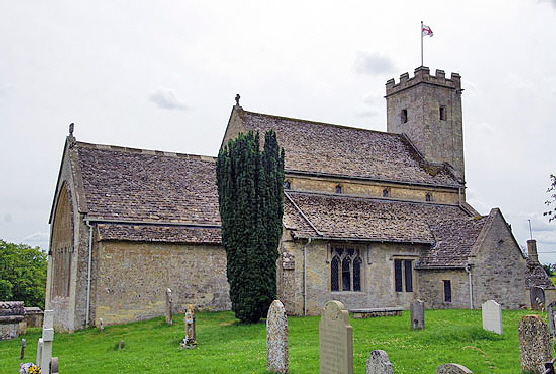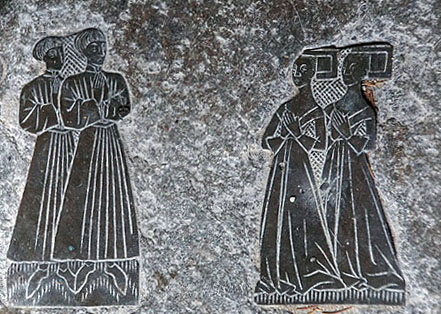|
|
||||||||||||||||||||||||||||||||||||||||||||||||||||||||||
|
Please sign my Guestbook and leave feedback |
||||||||||||||||||||||||||||||||||||||||||||||||||||||||||
|
Recent Additions |
||||||||||||||||||||||||||||||||||||||||||||||||||||||||||
|
|
||||||||||||||||||||||||||||
|
quite Norman-looking columns. The south aisle is a little later and the difference between the two arcade styles is quite instructive. These aisles are painfully narrow, reflecting the usual practice of the day. This brings me to the interesting insights that this rather odd little church can give us. If you look at the north aisle in the picture on the left you should be struck by the meagre little clerestory which is in a later Perpendicular style. But note also the steep pitch of the roofs. At a time when lead was too expensive for most country churches, this steepness allowed rain and, more importantly, snow to run readily off the roofs. The trouble is that if you later want a clerestory, those steep roofs intrude a long way up the nave walls. The solution at many churches was to widen the aisles, lower the pitch of the roofs and apply lead to keep out the water. Unfortunately, this was an exceptionally expensive program of work, although many churches indeed did just this. At Swinbrook, however, it seems sufficient funds were not available Hence the almost comically small clerestory. The church compensated for their inability to add a lot of light to the church in that way by fitting large rectangular aisle windows. Why the rectangular profiles? Well, it must surely be that they needed as much bang for their buck as they could get in the matter of admitting light. As soon as you put in an arch you lose width at the top, of course. The rectangular windows have ballflower courses in their surrounds. This is Decorated style and suggests that they were inserted sometime in the first half of the fourteenth century. See my “Bums, Fleas and Hitchhikers” if you want to know a lot more about this. Or click here if you want to now a bit more! The west tower is a little under-nourished perhaps and dates only from 1822. I don’t know if there was a tower there before but presumably not. All round, it is an odd little place! Two more items of interest must be mentioned. There is a range of four mediaeval misericords. These were liberated from the nearby dissolved priory of Burford at its dissolution. Then there are the graves of the Mitford family. As a post-war baby I have never been able to fathom Britain’s preoccupation with this rather odd family, and its fascist leanings and toxic snobbery. But I am mentioning them here, so I presumably am as guilty as anyone else! |
 |
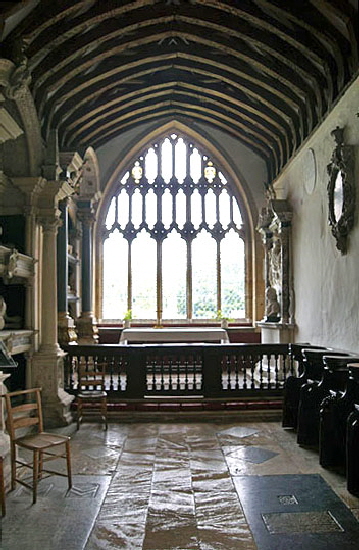 |
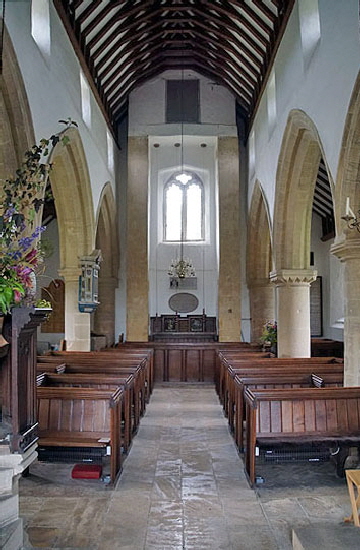 |
|
Left: Looking towards the east. The chancel arch doesn’t look quite big enough for the wall or, perhaps more accurately, the chancel does not look quite tall enough for the nave! Centre: The chancel. The Fettiplace monuments are to the left - although actually there is another to the right! Note the misericords. Right: Looking towards the west end. Note the differences between the arcades. The architects that built the west tower in 1823 perhaps decided that a tower arch was a little too passe. Looking at the tower itself, however, I think it probably more a case that they were bloody useless. “You want a what, squire, an arch? ‘Oo do you take me for, Christopher bloody Wren? (sucks his teeth). We can give you a nice little lintel. ’Ow would that be? They’re becoming very popular ” |
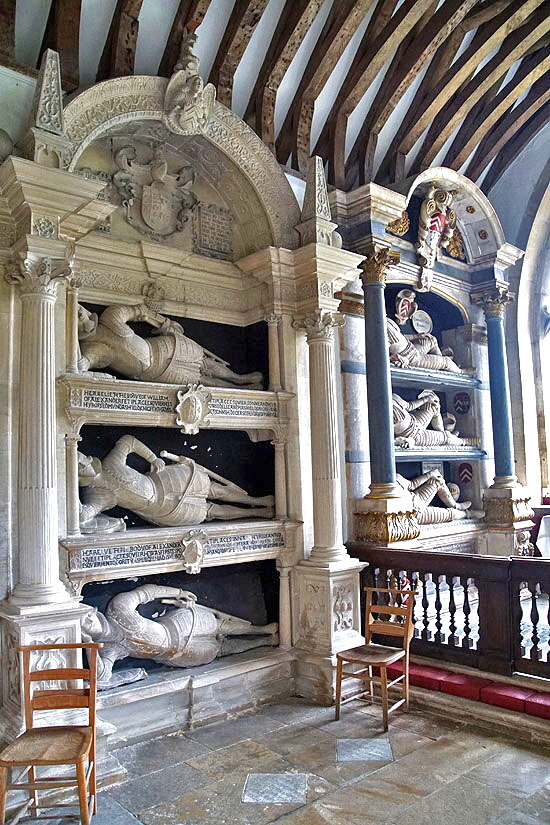 |
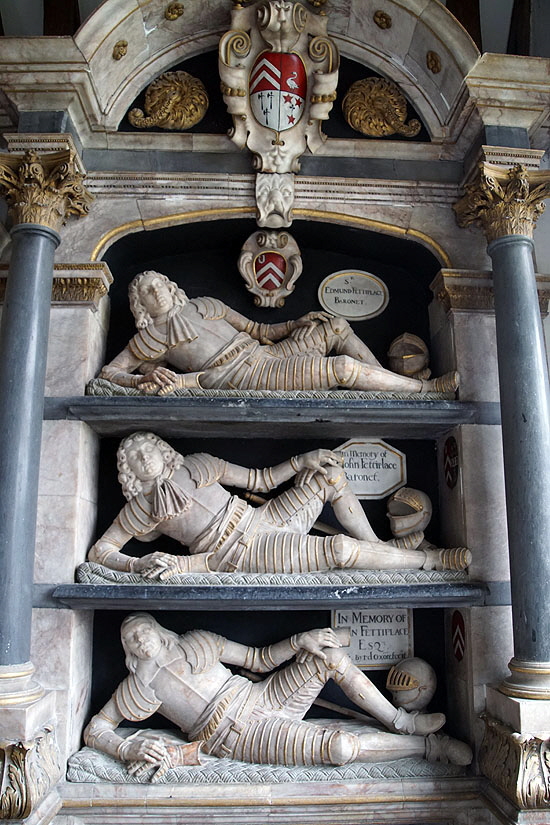 |
|
Left: The Fettiplace tombs in all their insane ostentatiousness. Why did I not think to move that blasted chair? The older generation of Fettiplaces are on the left. Right: The later series of three monuments are based upon effigies that could at least be described as anatomically possible, unlike the earlier versions. The postures are very much of a kind although not identical. Like their predecessors they are shown in armour and their knightly helms are at their feet. Each casually holds a gauntlet in his fingers. Their hair is curled. A likely bunch of roister-doisters. I have not been able to uncover any records of these three actually having born arms in battle but that rarely inhibited the sculptors of that (or any other) day. In this case it was one William Byrd of Oxford. Things didn’t get any better in the seventeenth century when the favoured way of representing the wealthy dead was to display them as Roman generals or Greek statesmen. Little men with big egos, it seemed |
 |
|||||||||
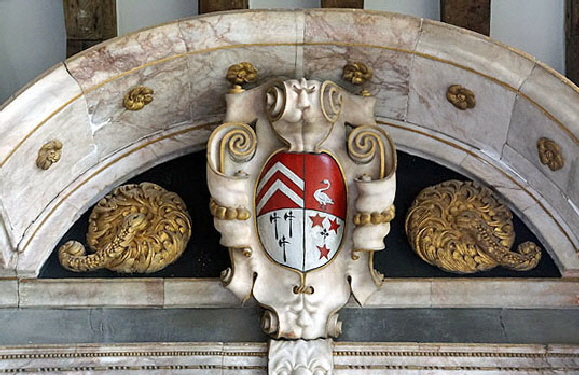 |
|||||||||
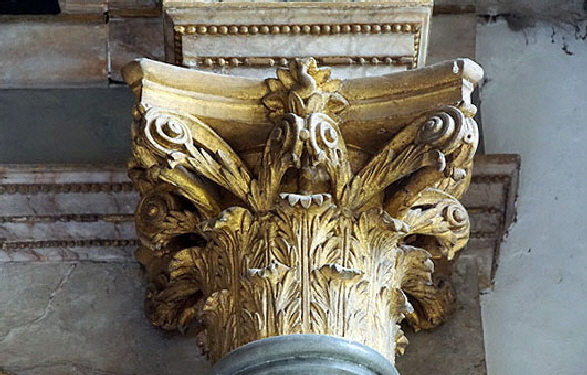 |
|||||||||
|
Left: The earlier generations of Fettiplaces with Sir Edmund (d.1613) at the top. The martial themes is the same but it fascinating to compare the changing styles of armour and dress. These three poor men face an agonising wait for the last judgement, elbows supporting the entire weight of their bodies and their armour, and with their legs apart! The Fettiplace family claimed lineage from the Normans, and their family name certainly implies that. The Fettiplaces (now extinct as a line) don’t seem to have troubled posterity very much, however and this lot certainly didn’t. Right Upper: The nicely carved head of the later trio of monuments. In fact this is a rather superior group. Stone has been replaced by marble and alabaster, including two marble columns and very grand Corinthian capitals (right below) |
|||||||||
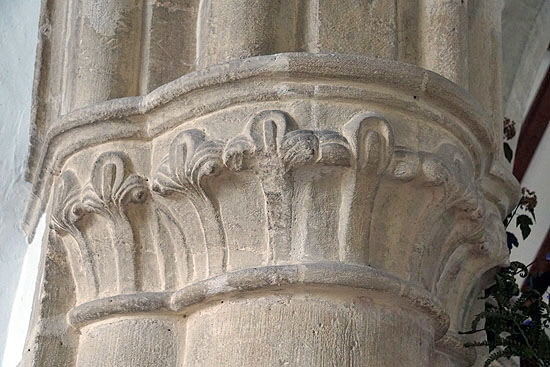 |
 |
||||||||
|
It is sobering to think about carved capitals in this church. On the later Fettiplace monuments we see extravagant Corinthian capitals that are traceable, as the name implies, back to the sculptors of ancient Greece. Here (left and right) we have capitals from the Transitional north arcade with these big lumpy decorations. Five hundred years later, English masons were able to carve those Corinthian capitals again, I am passionate about English mediaeval artisanal art but sometimes it only serves to show what had been lost with the passing of the classical civilisations. |
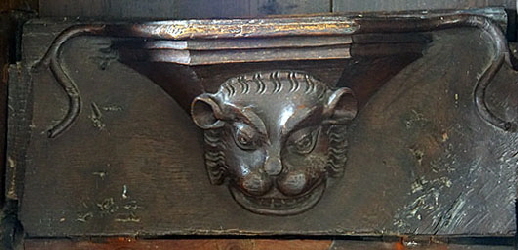 |
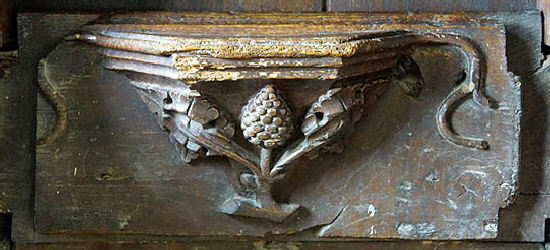 |
||||||||||||||||||||
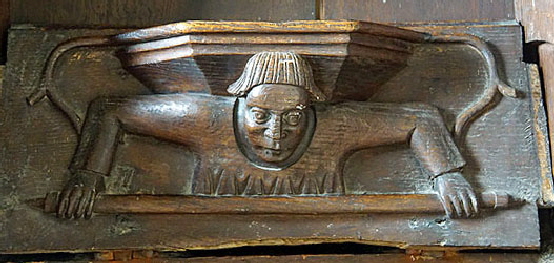 |
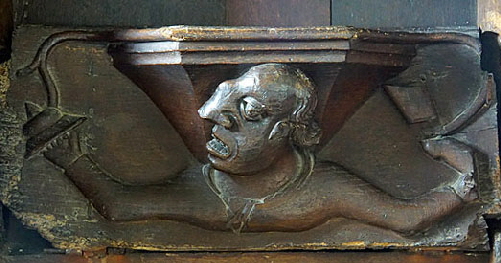 |
||||||||||||||||||||
|
The misericords are a little unusual in that they except arguably in the case of the example bottom right, they have no supporters (that is, carvings to left and right of the main vignette).They have twig carvings - not uncommon in English misericords - but no actual supporters. |
|||||||||||||||||||||
 |
 |
||||||||||||||||||||
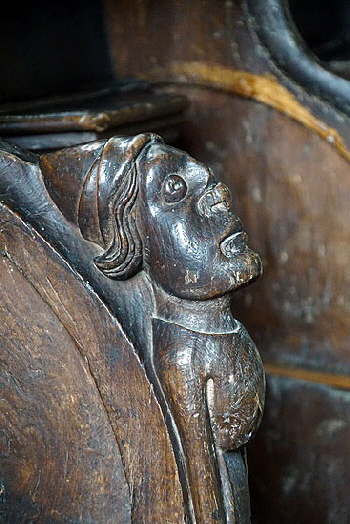 |
|||||||||||||||||||||
 |
|||||||||||||||||||||
|
As with many misericord sets (four is common) there are grotesque carvings in the facing edges of the stalls. The best here by a wide margin is the wonderful dragon draped with his l-o-o-o-ng legs trailing behind him (second right). he looks pretty grumpy. |
|||||||||||||||||||||
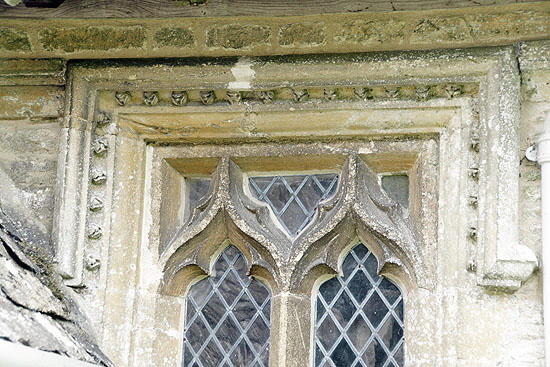 |
|||||||||||||||||||||
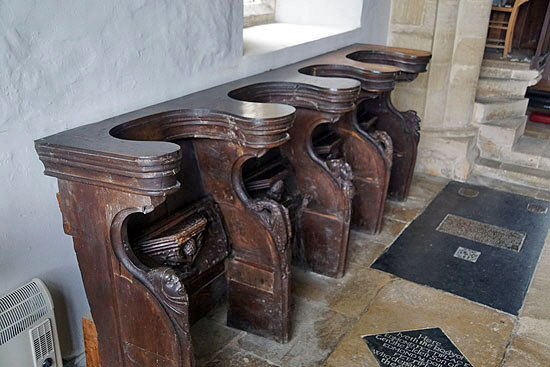 |
|||||||||||||||||||||
|
Left: The set of four misericords. Right: South side window with rectangular profile but with ballflower decoration suggesting it is early to mid fourteenth century |
|
|
||||||||||||||||||||
 |
|||||
 |
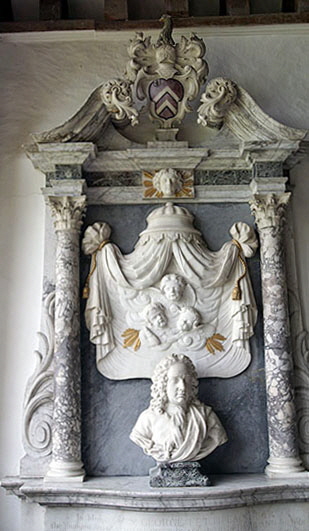 |
||||
|
Left: Memorial to John Goddard (d.1623). Centre: This is another Fettiplace - Sir Edmund who died in 1743. The monument is in the south wall of the chancel, facing his stacked forebears. You can see how it was now fashionable to show men not as military figures but as men of thought and achievement. Right: Reset mediaeval glass. |
 |
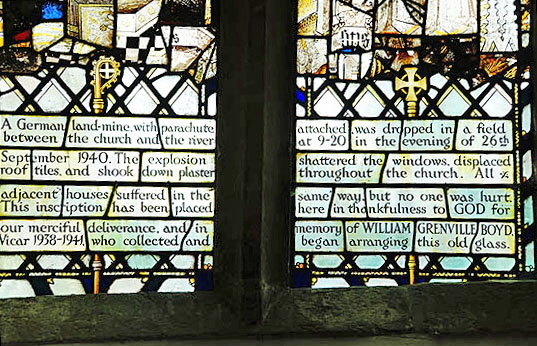 |
||
|
Left and Right: It is not unusual for mediaeval glass to be be pieced together in this way but Swinbrook’s little kaleidoscope is nicer than most. The inscription explains what happened here. |
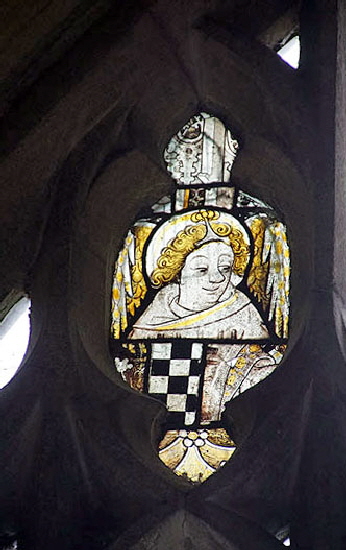 |
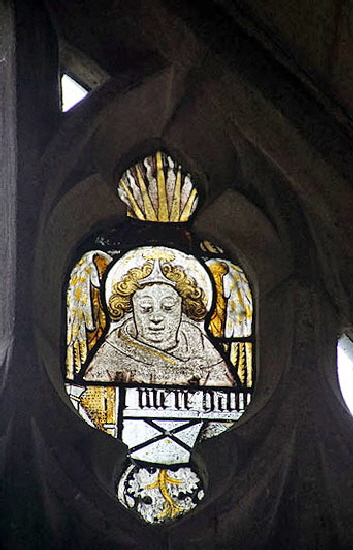 |
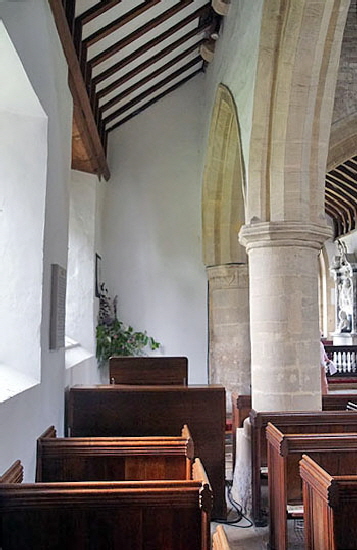 |
|||||||||
|
Left and Centre: These quite charming fragments of mediaeval glass are placed within the top lights of the east window, Right: This picture gives you an idea of the narrowness of the aisles - in this case the south. Look at the amount of light coming from those big rectangular Decorated style windows. |
|||||||||||
 |
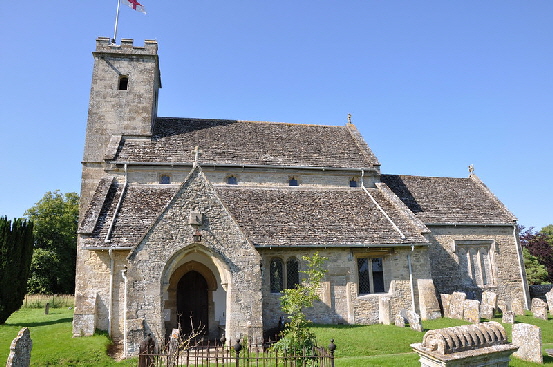 |
||||||||||
|
Left: The church from north east. That east window is a bit of a monster. I do not how old it is. The little excrescence on the north side - oddly situated where you might expect to find a north porch - is a twentieth century vestry. It does not, however, share the ugliness of most vestries which is a blessing! Right: The south face is definitely the most attractive - or is that the light? You can see very clearly here the oddly anorexic clerestory. It is fairly clear, I think, that it was not “raised” in the normal sense but that the parish just commissioned some unfeasibly small windows to fill the very narrow gap between the aisles and the nave roof. The whole church looks not so much “Perpendicular” as “rectangular”! Yet, like most English parish churches it has a quirky and engaging charm of its own. |
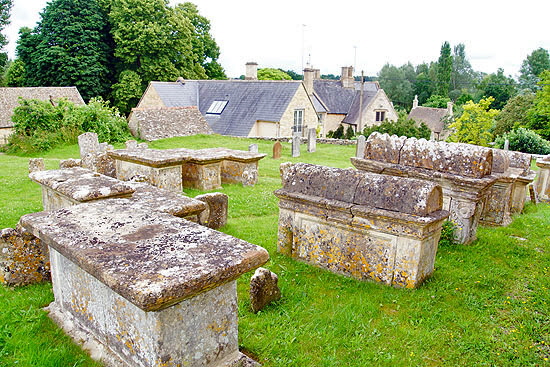 |
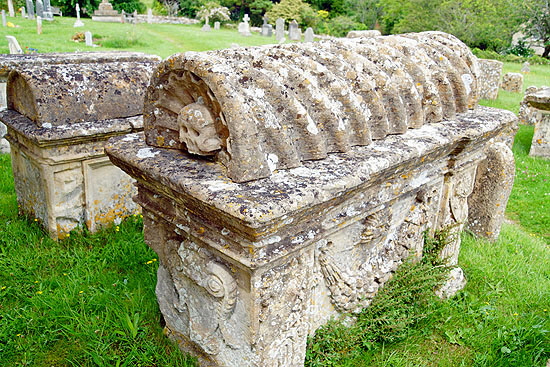 |
|||||||||||||||||||
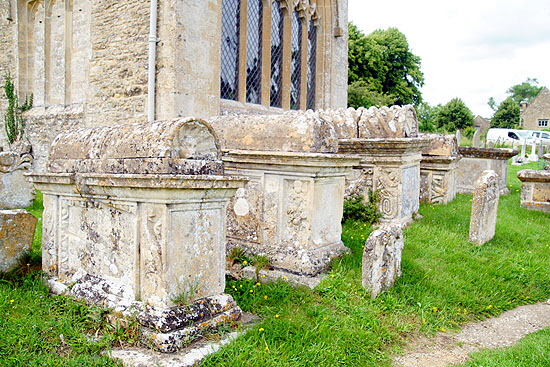 |
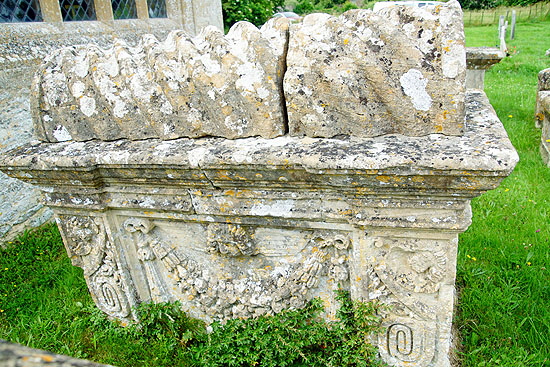 |
|||||||||||||||||||
|
I am not an aficionado of churchyards and their monuments - although we have a dear friend who is. That skull (top right), is for her! In the Cotswolds, however, you will find monuments that cannot help but thrill with their lovely mellow stone and barmy carvings! |
||||||||||||||||||||
 |
||||||||||||||||||||
 |
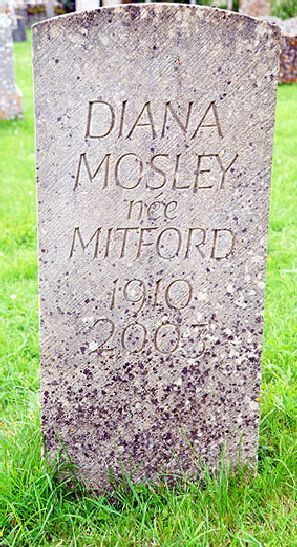 |
|||||||||||||||||||
|
Headstones of Nancy and Diana and Unity Mitford. Nancy was the eldest sister and is remembered as a novelist. A Francophile, she seemed to have avoided the fascist-supporting tendencies of her sisters, Diana and Unity. She did, however, bequeath us the bleak notion that words were “u” or “non u” - that is upper class or non upper class. Charming! Diana, on the other hand, married Oswald Mosley the leader of the British Union of Fascists. I don’t think we need to say any more than that. Unity was little better. An anti-semite, admirer of Hitler and a member of his inner circle she tried to shoot herself when the war broke out. She was repatriated with extensive brain damage. One might uncharitably suggest that she was born with it but in any event she died in 1948. What the hell kind of parents name their daughter “Unity Valkyrie” anyway? They were quite a brood. Quite a few other Mitfords are buried here too, but this gruesome trio are the ones that still manage to exert a fascination - and not nearly enough abhorrence - with the British public. |
||||||||||||||||||||
 |
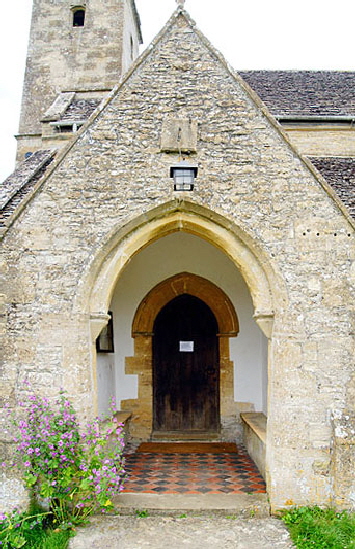 |
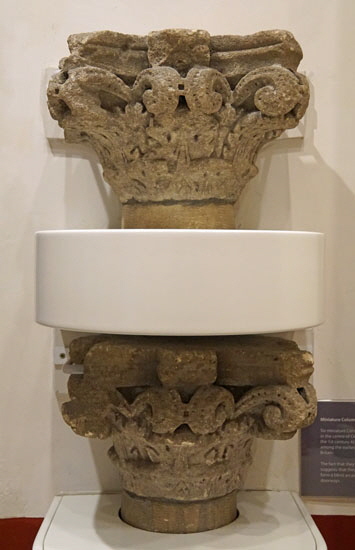 |
||||||||||||||||||
|
Left: The west tower has been built between two buttresses - and if you look at the slopes on this site, especially west to east, you will realise that they would have been necessary. The west door has been filled in and perhaps it is a little surprising that it was provided in the first place. The “budget” nature of this tower is perhaps emphasised by the rather agricultural arrangements for accessing its upper floors! Centre: The pretty little south porch. Cotswold stone - don’t you just love it? Right: Roman Corinthian capitals, Corinium Museum, Cirencester, Gloucesterhire. |
||||||||||||||||||||
